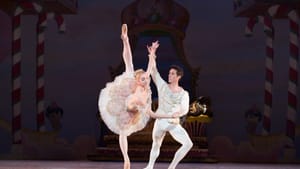Stay in the Loop
BSR publishes on a weekly schedule, with an email newsletter every Wednesday and Thursday morning. There’s no paywall, and subscribing is always free.
Size matters
The Pennsylvania Ballet comes up short

The Philadelphia ballet world blew up this month after a Facebook cri de coeur surrounding ballerina Sara Michelle Murawski. The Philadelphia Daily News followed up on January 5, 2017 with a cover story: “Tutu Tall?” It reported the Pennsylvania Ballet did not renew Murawski’s contract for the coming year. In response to the growing storm, Pennsylvania Ballet Director David Gray released a statement that began, “Building a world-class ballet company is similar to building a world-class sports team.” It included lots of “Go, team (as long as you go away)” language such as, “We support our dancers in pursuing other opportunities….”
But at the center of the badly handled controversy is a tall (five foot 11 inches) dancer who did not have a growth spurt overnight. Size always matters in ballet, but not always in the same way.
The long and short of it
In 1910, Serge Diaghilev’s Ballet Russe shocked the world with the sensual ballet Scheherazade, with choreography by Michel Fokine and starring Vaslav Nijinsky as the golden slave and Ida Rubinstein as Zobeide, the sultan’s wife. Nijinsky, at five foot four, was the best dancer of his era. During his Scheherazade death scene, he was said to spin on his head with his feet straight up in the air. Rubinstein could not dance, but was renowned instead for her dramatic stillness when striking poses, her great “Amazonian” height, and her extreme thinness. Scheherazade’s erotic adagio was infamous. In ballet, as in life, when you are lying down, height does not matter.
Choreographer George Balanchine preferred more skill in his muses, but many of his favorite ballerinas stood about six feet tall en pointe, and again, were very slender. He often hired tall dancers to partner them, but in the 1970s and ‘80s, the best male dancer in the world was Mikhail Baryshnikov, who is five feet six inches tall. When he danced Balanchine’s Prodigal Son (also created for the Ballet Russe) with Karin von Aroldingen’s siren, his nose landed comfortably on her chest. Again, ballet proved that when it comes to great talent — and the illusion of wild sex — height doesn’t matter.
But sometimes, height does matter. Rubinstein was for a while a muse of Fokine, even though she couldn’t actually dance, and Balanchine’s neoclassical leotard ballets emphasize the tall, lean, ballerina — often too lean. Eating disorders are an open embarrassment to classical ballet, but they’re not new. Ida Rubinstein maintained an obsessive regimen to stay thin.
It is always about fashion
The Pennsylvania Ballet has always specialized in Balanchine and the modern aesthetic. But in 1978 the company introduced more traditional story ballets and promised the American Ballet Theater’s Ted Kivitt a shorter, lighter partner, Michelle Lucci, to do Coppélia. But Kivitt married her and took her to Milwaukee, so that didn’t work quite as expected. The company continued to add to its repertoire more story ballets: Giselle, Cinderella, Don Quixote, Dracula, and now Le Corsaire.
At first, the company offered one story ballet each season: Balanchine’s The Nutcracker. Now we have three, including The Nutcracker, and each runs for at least twice as many performances as the programs composed of shorter, usually non-narrative pieces. That’s a big change, but change doesn’t happen in a vacuum. Those traditional story ballets, once scorned as old fashioned, are suddenly hot again. And they come with a totally different aesthetic: weightless, ethereal, with lots of overhead lifts.
The bitter end
I can’t say whether the company did not renew the contract of a particular ballerina because her height did not fit the changing aesthetics of the Pennsylvania Ballet. We have only the cryptic official statement from the ballet, which has so far refused further comment. And we have the word of the understandably distraught dancer, who said she was told that the company could not afford to hire a taller dancer to partner her.
“Ballerina fired because she is tall,” is a simple story to tell. The real story is more complicated. Certainly the company could have let a shorter male dancer go if funding for a taller partner was the only issue. There may have been reasons that she was not told or did not hear.
But Corella started by firing half his dancers in a purge of those with a commitment to the founding principles of the company, so he didn’t get the benefit of the doubt he might otherwise have had when someone on Facebook said he fired her for ostensibly spurious reasons. In particular, he didn’t get the benefit of the doubt when the company’s statement to the press read like a computer program wrote it by combining random phrases from a motivational handbook.
If I were the ballerina, I would not want to place my firing in the spotlight. Other companies might have seen this as the normal process of a company’s changing direction. Now, in addition to the usual considerations, companies will have to wonder if hiring a dancer best known for being fired would be good or bad for them, and they have to wonder if she will make public her grievances with them.
Sign up for our newsletter
All of the week's new articles, all in one place. Sign up for the free weekly BSR newsletters, and don't miss a conversation.

 Camille Bacon-Smith
Camille Bacon-Smith